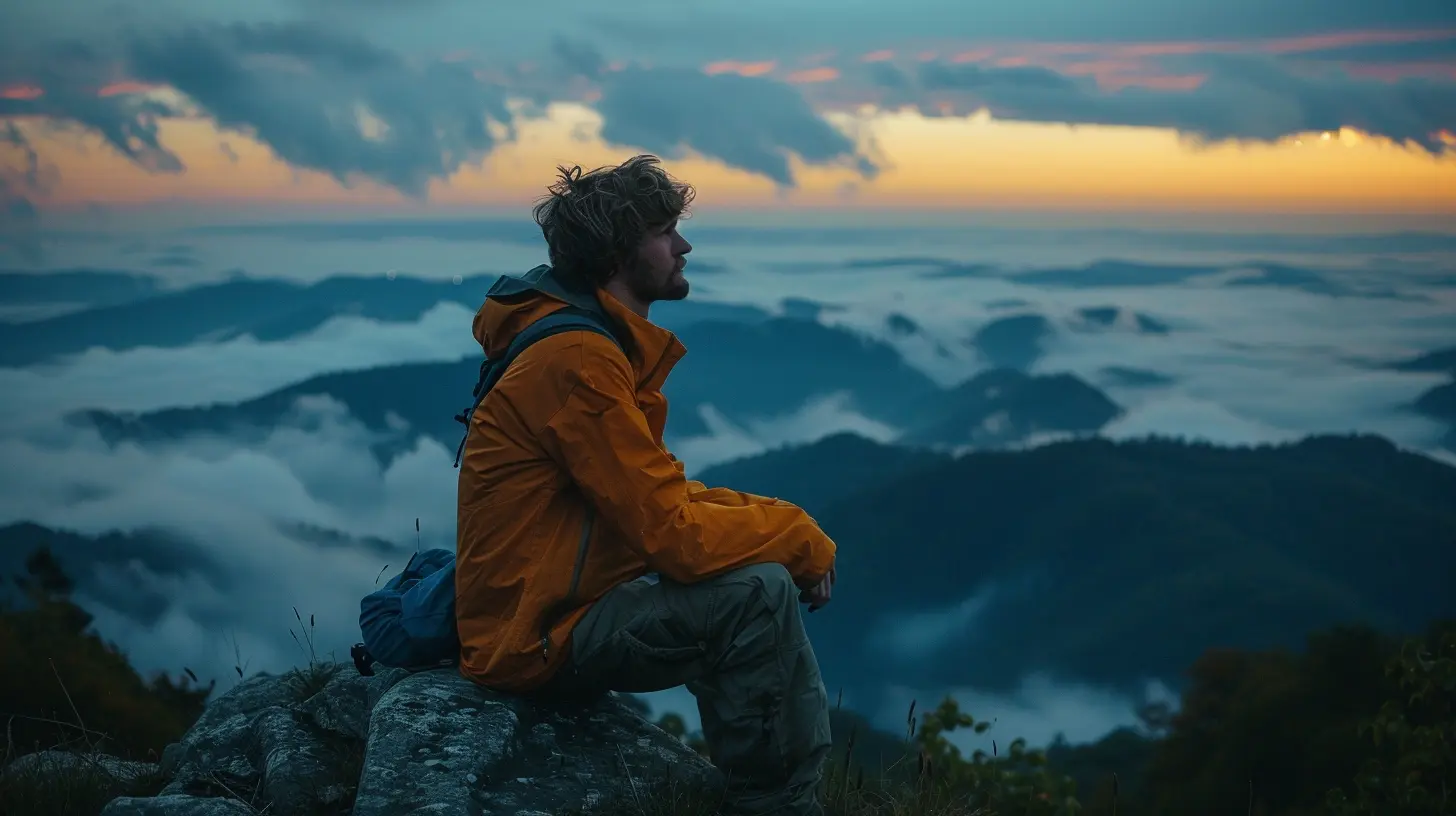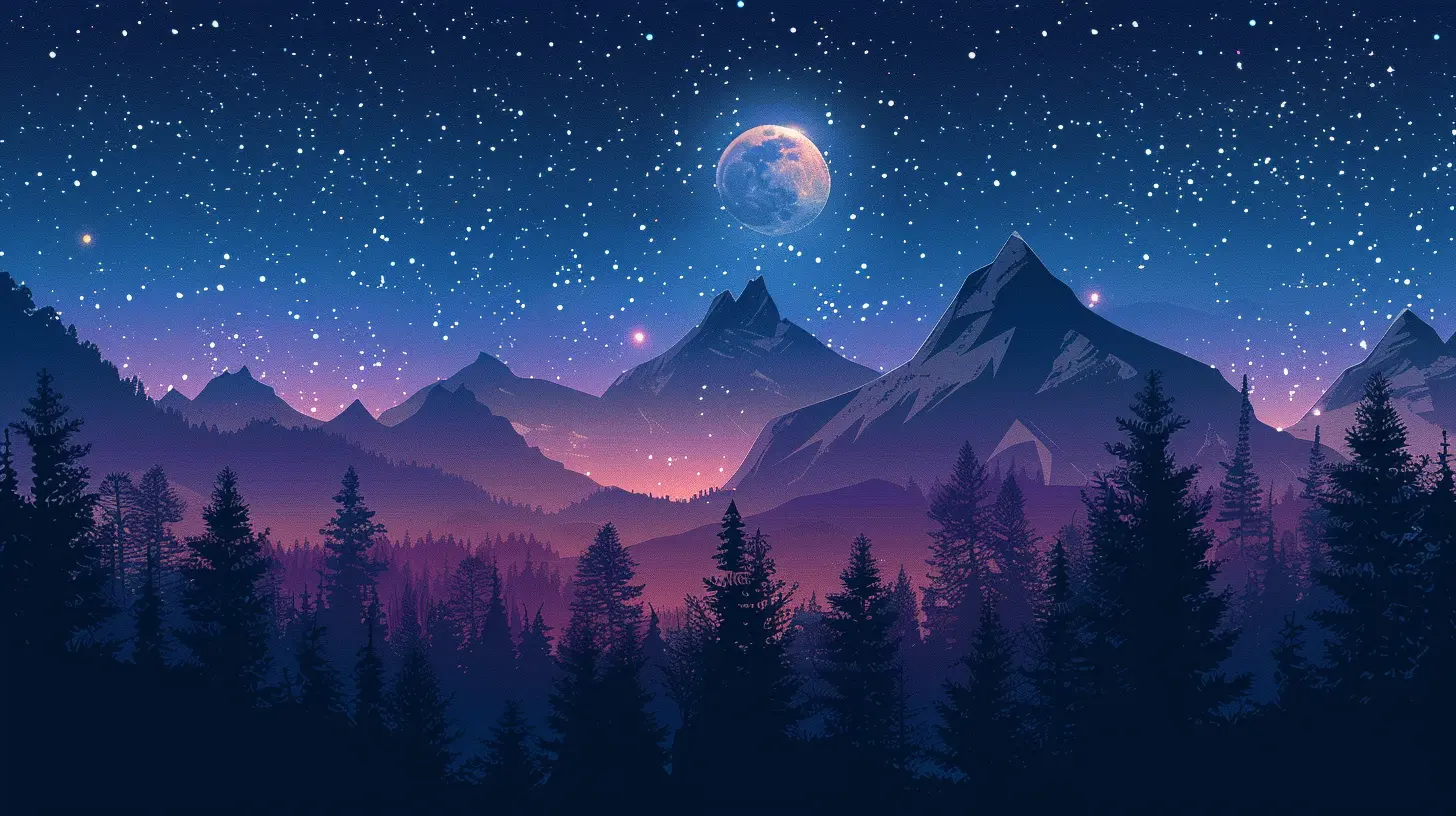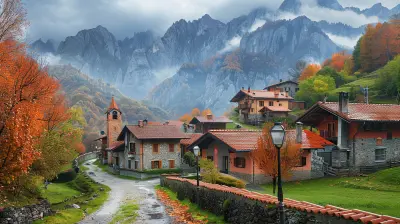Stargazing in the Mountains: An Adventure Under the Night Sky
22 November 2025
Have you ever looked up at the night sky and felt a sense of wonder? There's something magical about seeing thousands of stars twinkling above you, far from the blinding city lights. Now, imagine doing that from the top of a mountain, where the sky appears clearer, the air feels fresher, and the universe seems closer than ever.
Stargazing in the mountains isn’t just about looking at stars—it’s an adventure, a soul-soothing experience that connects you with nature in ways you never imagined. Whether you're a seasoned astronomer or just someone who loves the night sky, this guide will help you make the most of your celestial journey.

Why Stargazing in the Mountains is Special
1. Less Light Pollution, More Stars
In cities, artificial lights create a glow in the sky, making it nearly impossible to see all but the brightest stars. In the mountains, you're far from streetlights, neon signs, and headlights. That means every corner of the sky is alive with celestial wonders you wouldn’t usually notice.2. Higher Altitudes Mean Clearer Skies
The higher you go, the thinner the atmosphere. With less pollution, moisture, and dust in the air, the stars appear sharper and brighter. It’s why observatories are often built on mountaintops—because the views are simply unbeatable!3. A Deeper Connection with Nature
Stargazing isn’t just about astronomy; it’s about slowing down and marveling at the universe. The silence of the mountains, the cool night air, and the vast sky above create a peaceful, almost meditative experience.
The Best Mountain Locations for Stargazing
Not all mountains are created equal when it comes to stargazing. Some places have the perfect combination of high altitude, clear skies, and minimal light pollution. Here are a few top picks:1. Mauna Kea, Hawaii
At nearly 14,000 feet above sea level, this dormant volcano is one of the top stargazing spots on Earth. It’s home to world-class observatories and offers jaw-dropping views of the night sky.2. Jasper National Park, Canada
This Dark-Sky Preserve is one of the best places in North America to see the Milky Way in all its glory. The crisp mountain air and scenic surroundings only add to the experience.3. The Atacama Desert, Chile
Surrounded by mountains, this high-altitude desert gets almost no rainfall and has some of the clearest, driest skies on the planet—perfect for stargazing.4. The Dolomites, Italy
Not only do you get stunning mountain landscapes, but the remote locations in these Italian peaks offer star-filled skies with minimal human interference.5. Rocky Mountain National Park, USA
With designated stargazing areas and ranger-led night programs, this park offers a great mix of accessibility and breathtaking celestial views.
Essential Gear for a Mountain Stargazing Trip
To get the best experience, you’ll need to pack smart. Here’s what you shouldn’t leave behind:1. A Telescope or Binoculars
While you can enjoy stargazing with the naked eye, a good telescope or even a pair of binoculars will let you see planets, star clusters, and even distant galaxies with stunning detail.2. A Star Map or Stargazing App
Unless you're an expert astronomer, it's helpful to have a star map or an app like SkyView or Stellarium. These tools help you identify constellations, planets, and deep-sky objects with ease.3. Warm Clothes and Blankets
Mountaintop nights can get seriously chilly, even in summer. Dress in layers, bring a warm blanket, and maybe even a sleeping bag for extra comfort.4. A Red Flashlight
Bright white light ruins your night vision, making it harder to see stars. A red flashlight helps you see in the dark without compromising your ability to spot celestial wonders.5. Snacks and Hot Drinks
Sipping on a warm cup of tea or hot chocolate while gazing at the universe is a next-level experience. Bring easy-to-carry snacks, too—you don’t want hunger cutting your adventure short!
What to Look for in the Sky
Even if you don’t have any fancy equipment, the mountains offer some dazzling sights. Here are a few celestial highlights to watch for:1. The Milky Way
On a clear night in a dark location, the Milky Way arches across the sky like a glowing river. It’s one of the most breathtaking sights you can witness with the naked eye.2. Planets
Venus shines bright in the evening sky, while Jupiter and Saturn offer fascinating views through a simple telescope or binoculars. Mars occasionally glows with its reddish hue, while Mercury makes brief appearances near sunrise or sunset.3. Meteor Showers
Certain times of the year bring incredible meteor showers, like the Perseids in August and the Geminids in December. Watching shooting stars streak across the sky never gets old!4. The Andromeda Galaxy
Sitting 2.5 million light-years away, this is the closest galaxy to our own. Under dark skies, you can spot it as a faint, glowing patch with the naked eye.5. Star Clusters and Nebulae
The Pleiades, also known as the Seven Sisters, are a stunning open star cluster visible to the naked eye. With a telescope, you can also spot the Orion Nebula—a massive cloud of dust and gas where new stars are being born.Tips to Make Your Stargazing Adventure Unforgettable
Even with the best location and equipment, a few simple tricks can take your experience to another level:1. Check the Moon Phase
A full moon might be beautiful, but its brightness can wash out fainter stars. For the best stargazing, aim for a new moon or a crescent moon night.2. Give Your Eyes Time to Adjust
It takes about 20-30 minutes for your eyes to adapt to darkness. Avoid bright lights, including phone screens, to fully experience the stars.3. Find a Comfortable Viewing Spot
Lie down on a blanket or reclining chair so you’re not straining your neck. The more relaxed you are, the longer you’ll want to stay under the stars.4. Capture the Moment
If you love photography, try astrophotography! With a DSLR camera, a tripod, and a long exposure setting, you can capture stunning images of the night sky.5. Bring Good Company
Stargazing is best enjoyed with friends, family, or a special someone. Sharing the experience makes it even more magical.
The Magic of a Mountain Night Sky
There’s something humbling about staring into the vastness of space from a mountaintop. It reminds us that we’re just tiny specks in this endless universe, yet somehow, we’re lucky enough to witness its beauty.So, the next time you’re looking for an adventure that feeds your soul, grab a blanket, head for the mountains, and lose yourself in the wonders of the night sky. Who knows? Maybe you'll spot a shooting star and make a wish that changes your life!
all images in this post were generated using AI tools
Category:
Mountain AdventuresAuthor:

Winona Newman
Discussion
rate this article
1 comments
Vesperos Howard
Stargazing in the mountains offers a breathtaking escape from city lights. Bring a cozy blanket, hot drinks, and a stargazing app to identify constellations. Don't forget your camera to capture the stunning night sky—it's an unforgettable adventure!
November 22, 2025 at 5:23 PM


